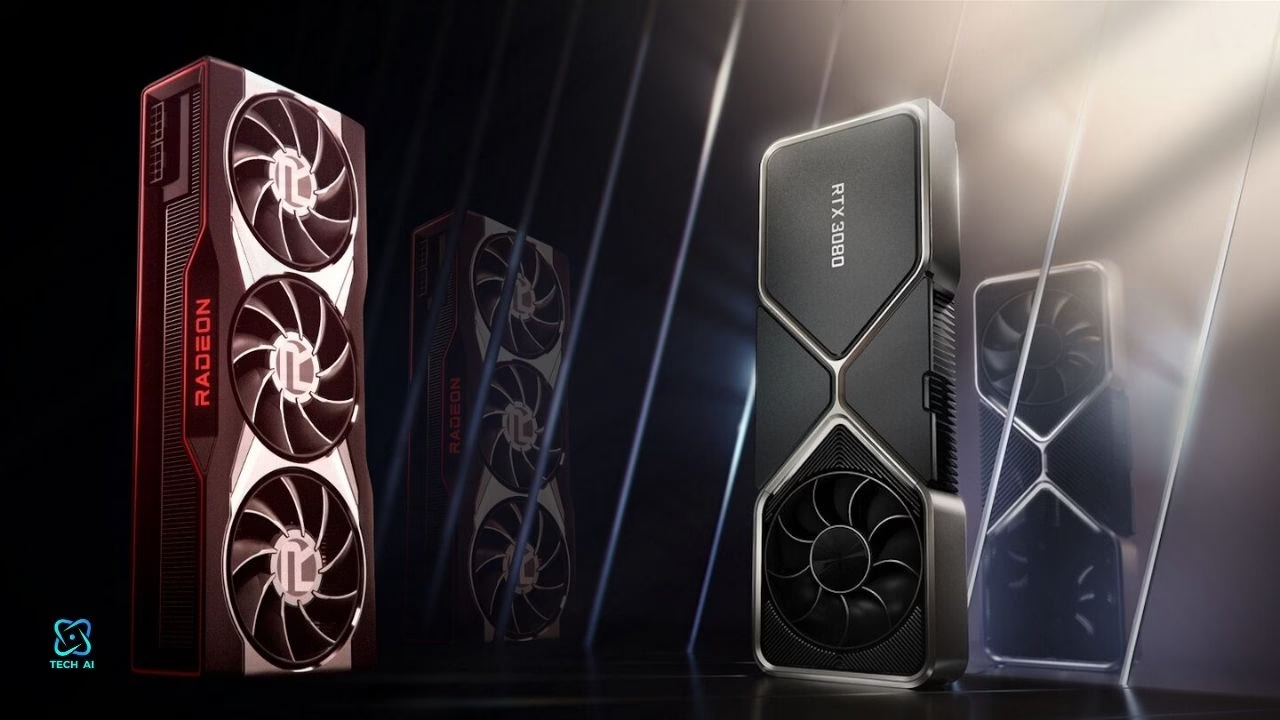When choosing the proper GPU, the 3080 vs 6800 XT showdown has tech enthusiasts buzzing. These two graphics cards bring impressive power to the table, whether aiming for smooth 4K gaming, realistic ray tracing, or lightning fast rendering. But how do they genuinely compare performance, features, and value? From benchmarks to cooling and real world usability, this guide includes everything you need to know about NVIDIA RTX 3080 and AMD Radeon RX 6800 XT. Get ready to discover which one takes the crown in this ultimate GPU face off!
RTX 3080 vs RX 6800 XT: Which GPU Reigns Supreme?
When comparing the 3080 vs 6800 XT, it’s clear these GPUs are titans in gaming and content creation. The RTX 3080 excels with advanced ray tracing and AI features, making it a favorite for gamers seeking immersive 4K experiences. On the other hand, the 6800 XT offers impressive raw performance, extra VRAM, and better power efficiency, providing excellent value for money. Whether you’re gaming, streaming, or editing, understanding the strengths of these GPUs will help you make the right choice. Let’s dive deeper into this head to head showdown.
Performance Showdown: 3080 vs 6800 XT Benchmarks
Performance is crucial in the battle between the 3080 and the 6800 XT. The NVIDIA RTX 3080 delivers outstanding results in 4K gaming, leveraging its second generation RT cores and DLSS (Deep Learning Super Sampling) to boost frame rates without sacrificing visual quality. This makes it ideal for games with heavy ray tracing and graphics requirements.
However, the AMD Radeon RX 6800 XT competes closely with its 16GB of VRAM more than the 3080’s 10GB—allowing it to handle memory heavy applications more effectively. For 1440p gaming, the 6800 XT shines, delivering consistent frame rates and a smooth experience. While the RTX 3080 outperforms in ray traced scenarios, the 6800 XT holds its ground in traditional rasterization.
Ray Tracing: Is the 3080 the Better Choice?
The 3080 vs 6800 XT comparison highlights NVIDIA’s edge regarding ray tracing. The RTX 3080 features superior ray tracing performance thanks to its advanced RT cores and DLSS technology. DLSS boosts frame rates while maintaining sharp visuals, making ray tracing viable even in demanding games.
The 6800 XT supports ray tracing but lacks NVIDIA’s DLSS equivalent. AMD’s Fidelity FX Super Resolution (FSR) is a good alternative but doesn’t match the same optimization level. For gamers who prioritize ray tracing, the RTX 3080 stands out.
Power Efficiency and Cooling in 3080 vs 6800 XT
Between the 3080 vs. 6800 XT, the AMD Radeon RX 6800 XT is slightly more power efficient. It consumes less energy under similar workloads, which can reduce heat generation and power bills. However, the RTX 3080 compensates with NVIDIA’s efficient cooling designs, controlling temperatures during intense gaming or rendering tasks.
3080 vs 6800 XT Price: Which GPU Offers Better Value?
Price is a key factor in the 3080 vs 6800 XT debate. The Radeon RX 6800 XT is typically more affordable, offering excellent value for gamers looking for high performance without overspending. Meanwhile, the RTX 3080 justifies its higher price with superior ray tracing, DLSS, and a broader ecosystem of tools and drivers. The 6800 XT is a wise choice for those focused on budget friendly performance, but if advanced features are essential, the RTX 3080 is worth the investment.
3080 vs 6800 XT: A Comprehensive Comparison of Two Powerhouses
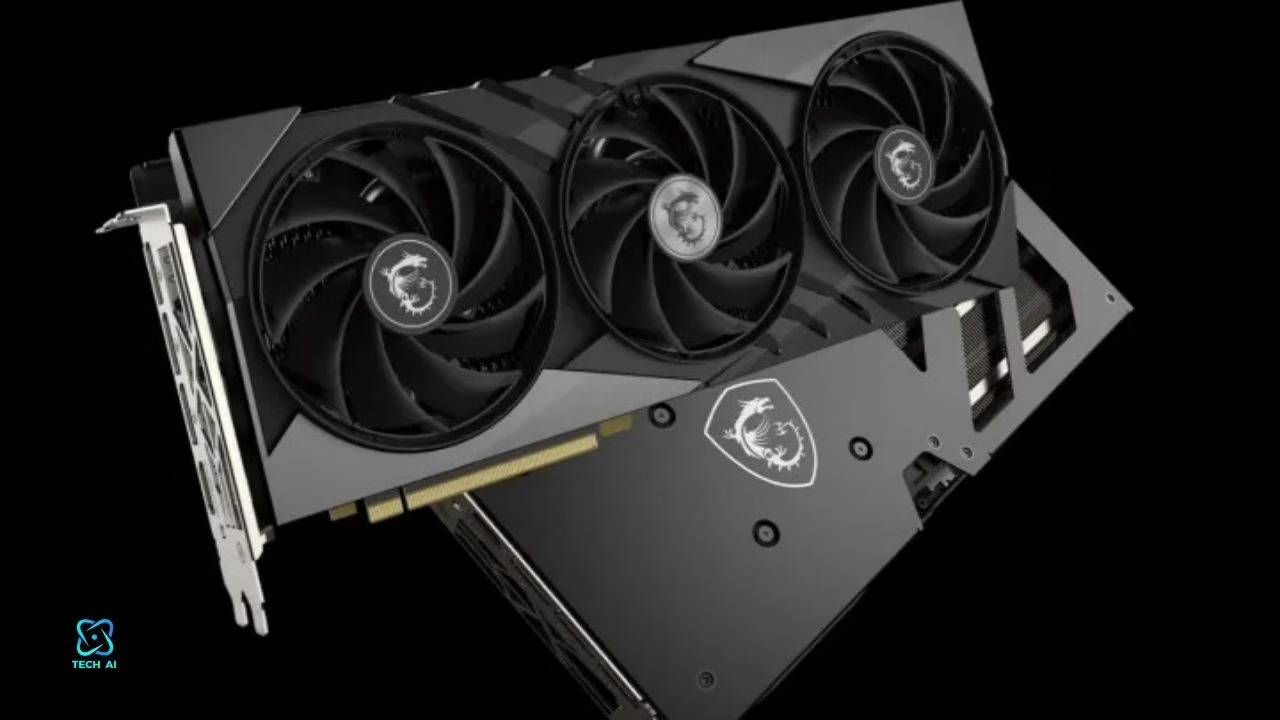
When comparing the NVIDIA RTX 3080 vs 6800 XT, gamers and content creators face a tough decision. Both GPUs offer incredible performance, but each has its unique strengths. Let’s break down the key features and market positioning to help you choose the best GPU.
NVIDIA RTX 3080: Dominating 4K Gaming and Creative Tasks
Launched in September 2020, the NVIDIA RTX 3080 is built on the advanced Ampere architecture. This GPU is designed for premium 4K gaming and offers remarkable performance for even the most graphically demanding games. It features 10GB of GDDR6X VRAM, which supports fast memory access and ensures smooth gameplay at high resolutions.
Key features of the RTX 3080 include:
- DLSS 3.0 for AI enhanced upscaling, improving frame rates while maintaining image quality.
- Second gen ray tracing cores for lifelike lighting, shadows, and reflections, enhancing visual realism in supported titles.
The RTX 3080 is positioned as a high end GPU for gamers and creators who demand the best performance. Whether you’re into streaming, gaming, or creative work like video editing, the 3080 delivers a premium experience. It shines in titles like Cyberpunk 2077 and Flight Simulator, providing stunning visuals and ultra smooth gameplay.
AMD Radeon RX 6800 XT: The Best Performance for Value
The AMD Radeon RX 6800 XT, launched in November 2020, leverages the RDNA 2 architecture, offering excellent power efficiency and competitive performance. With 16GB of GDDR6 VRAM, it ensures ample memory for high quality gaming and creative tasks, making it a fantastic option for 4K and 1440p gaming.
Key features of the RX 6800 XT include:
- Smart Access Memory is a technology that allows AMD Ryzen CPUs to access the GPU’s memory better, boosting performance.
- FSR (Fidelity FX Super Resolution) is an upscaling technology that improves frame rates without sacrificing image quality.
The RX 6800 XT is an excellent choice for high performance gaming, offering a better price to performance ratio. Italy with the RTX 3080 in benchmarks bin benchmarks ut typically costs less, making it a more affordable option without compromising performance.
3080 vs 6800 XT: Which One Should You Choose?
- For Premium 4K Gaming: The RTX 3080 is the clear winner for gamers looking for top tier graphics, especially if ray tracing and DLSS 3.0 are crucial to your experience.
- For Value and High Performance Gaming, the Radeon on RX 6800 XT offers a fantastic price to performance ratio, especially for users who want to play at 440pp or 4K without breaking the bank.
Both GPUs provide outstanding performance in modern games, and the choice largely depends on your budget and specific needs. The RTX 3080 excels in creative tasks, while the RX 6800 XT delivers solid gaming performance at a better price.
Performance Comparison: 3080 vs 6800 XT
Gaming Benchmarks: 3080 vs 6800 XT – FPS in 1080p, 1440p, and 4K
When comparing the 3080 vs 6800 XT for gaming, FPS (frames per second) performance is a key factor. In 1080p gaming, both GPUs provide excellent performance. Still, the NVIDIA GeForce RTX 3080 often leads with a higher frame rate, particularly in graphically demanding AAA titles like Cyberpunk 2077 and Red Dead Redemption 2. At 1440p and 4K resolutions, the RTX 3080 remains the stronger contender, providing a smoother experience with higher FPS in most games.
On the other hand, the AMD Radeon RX 6800 XT delivers competitive FPS, though it struggles slightly in 4K due to lower ray tracing capabilities. If you’re after maximum visual fidelity and smooth gaming performance at higher resolutions, 3080 vs. 6800 XT shows that NVIDIA tends to lead, particularly in demanding titles.
eSports Performance: 3080 vs 6800 XT for Competitive Gaming
Regarding eSports games like Valorant, Apex Legends, and Fortnite, 3080 vs 6800 XT performance takes a different turn. Both GPUs excel at 1080p and 1440p resolutions, but AMD’s 6800 XT offers better value in these scenarios, with a solid FPS performance at lower resolutions. The RTX 3080 shines when it comes to high refresh rates (240Hz and above), making it ideal for competitive gaming, but for most eSports titles, both GPUs deliver fast, responsive gameplay.
Gamers looking for smooth visuals and fast refresh rates will find the 3080 and 6800 XT excellent options, though the 3080 has the edge with higher frame rates in certain games.
Ray Tracing Performance: 3080 vs 6800 XT
Regarding ray tracing performance, the RTX 3080 outshines the 6800 XT. Ray tracing is a demanding graphical feature that simulates light behavior, significantly improving visual quality in supported games. The NVIDIA GeForce RTX 3080 has specialized cores, making it the superior choice for real time ray traced graphics in titles like Control and Battlefield V. The 6800 XT.
At the same time, a great performer lacks dedicated ray tracing cores and thus struggles in these games, providing lower FPS. If ray tracing is a priority, the 3080 is the better choice for high quality visuals in modern, ray traced games.
Creative Workloads: 3080 vs 6800 XT in Rendering and AI Tasks
For creative professionals working with tools like Blender, Premiere Pro, and DaVinci Resolve, GPU performance is crucial in rendering and video editing tasks. The RTX 3080 is favored due to its powerful CUDA cores, which are widely supported by creative software. This allows faster rendering times, smoother playback, and a more efficient workflow for video editors and 3D artists.
In contrast, while the 6800 XT performs well in creative tasks, it lacks CUDA cores and relies on AMD’s OpenCL support, which is not as widely optimized in professional applications. For AI based tasks and deep learning, the RTX 3080 retakes the lead due to its superior computing performance, offering faster AI model training times.
Synthetic Benchmarks: 3DMark and Performance Tests
When running synthetic benchmarks like 3DMark, the 3080 and 6800 XT show their strengths. The RTX 3080 consistently scores higher across gaming, rendering, and computational tests, mainly due to its superior architecture and advanced features like DLSS (Deep Learning Super Sampling) and Ray Tracing.
On the other hand, the 6800 XT holds its own with a strong performance in traditional rasterized gaming but tends to lag in more demanding synthetic tests that include ray tracing. These standardized performance tests indicate where each GPU excels, helping users make an informed decision based on their needs.
3080 vs 6800 XT: A Deep Dive into Ray Tracing and AI Features
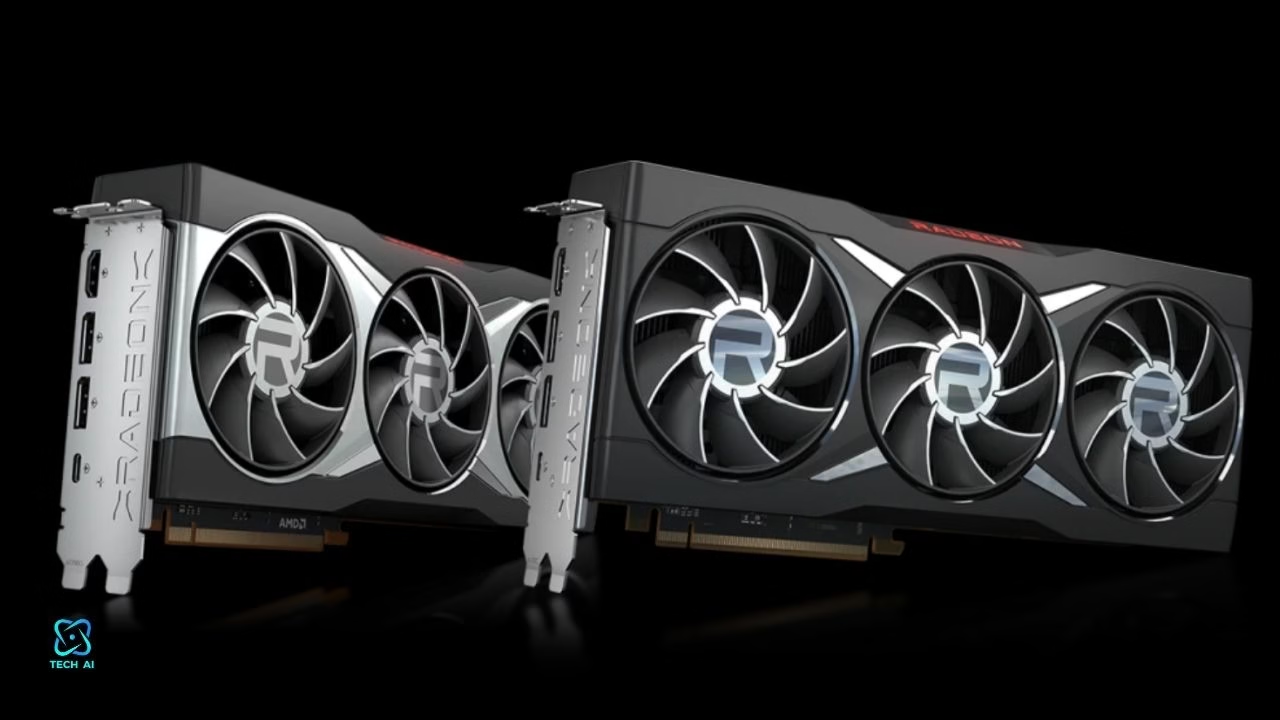
The 3080 vs. 6800 XT debate has become a hot topic regarding gaming performance. NVIDIA’s RTX 3080 and AMD’s RX 6800 XT offer cutting edge features like ray tracing and AI technologies, making them popular for gamers seeking top tier graphics. This article compares these two powerful GPUs, focusing on their ray tracing capabilities, AI technologies, and game support. We’ll provide you with everything you need to make an informed decision.
Ray Tracing Capabilities: 3080 vs 6800 XT Performance Breakdown
Ray tracing is a groundbreaking technology that simulates realistic lighting and reflections in real time, pushing graphical fidelity to new heights. Regarding their ray tracing performance, Let’s look at the 3080 vs 6800 XT.
- NVIDIA RTX 3080: With dedicated RT cores, the RTX 3080 delivers superior ray tracing effects, offering a smoother gaming experience, even in demanding titles like Cyberpunk 2077. It excels in real time ray tracing, providing stunning lighting, shadows, and reflections.
- AMD RX 6800 XT: While the RX 6800 XT features ray accelerators for efficient ray tracing, its raw performance generally lags behind the RTX 3080. However, AMD’s ray tracing technology has improved, particularly with newer driver updates, and it offers competitive performance in titles like Resident Evil Village and Far Cry 6.
In Cyberpunk 2077, the RTX 3080 stands out for its ability to maintain high frame rates while rendering realistic ray traced effects. The RX 6800 XT offers a more modest experience but delivers impressive visuals at a slightly lower frame rate.
AI Technologies: DLSS vs FSR – Which is Better for Your GPU?
AI technologies like Deep Learning Super Sampling (DLSS) and FidelityFX Super Resolution (FSR) are designed to enhance performance and visuals, particularly in demanding games. Here’s how these technologies compare in the 3080 vs. 6800 XT rivalry:
- NVIDIA DLSS (Deep Learning Super Sampling): The RTX 3080utilizess DLSS, an AI driven upscaling technology that uses machine learning to enhance image quality while improving FPS. DLSS can deliver higher frame rates and crisp visuals, especially at higher resolutions like 4K, making it a standout feature for the 3080.
- AMD FSR (FidelityFX Super Resolution): The RX 6800 XT supports FSR, an upscaling technology designed to improve performance without compromising visual quality. While FSR doesn’t leverage AI like DLSS, it still significantly improves game performance, especially in frame rate and performance at 1440p or higher resolutions.
While DLSS provides a more significant performance boost, FSR remains a solid alternative, especially for budget conscious players or those who want compatibility across different GPUs. FSR has made strides, but DLSS is still the preferred choice for AI powered upscaling in games like Cyberpunk 2077 and Shadow of the Tomb Raider.
Game Support and Ecosystem: NVIDIA vs AMD in Optimized Titles
Game support is crucial for performance. The 6800 XT compares AI features, such as ray tracing. Let’s explore how the 3080 vs. 6800 XT compares in terms of game ecosystem and optimization.
- NVIDIA RTX 3080: NVIDIA has a more mature ecosystem, with a broader range of ray traced games optimized for DLSS. Popular titles like Cyberpunk 2077, Control, and Shadow of the Tomb Raider run exceptionally well on the RTX 3080, delivering higher quality ray tracing and AI enhanced visuals.
- AMD RX 6800 XT: While AMD has made significant progress with its FSR technology, its game ecosystem is still catching up. Titles like Resident Evil Village and Far Cry 6 offer FSR support, but AMD doesn’t yet have the same number of DLSS optimized games. The RX 6800 XT offers excellent performance but may not provide the same visual quality in ray traced games as the RTX 3080.
Performance Comparison: 3080 vs 6800 XT in Real World Gaming
When comparing real world performance in demanding titles, the RTX 3080 typically outshines the RX 6800 XT in ray tracing and AI driven enhancements. The RTX 3080 offers more consistent performance in games that require heavy ray tracing and DLSS support. However, the RX 6800 XT is no slouch, delivering excellent results in games optimized for AMD technologies and offering solid frame rates in 1080p and 1440p gaming.
For gamers focused on 4K gaming with ray tracing, the RTX 3080 is the superior option, offering higher frame rates and more immersive visuals. On the other hand, the RX 6800 XT is a more cost effective choice for those seeking excellent 1440p performance without the premium price tag of NVIDIA’s top tier GPUs.
Memory and VRAM: A Key Factor in Gaming Performance and Workloads
The most significant difference between the RTX 3080 and 6800 XT is their VRAM capacity. The RTX 3080 has 10GB of GDDR6X memory, while the 6800 XT offers 16GB of GDDR6. The amount and type of VRAM can significantly impact gaming performance and heavy workloads like video editing, rendering, and 3D modeling.
VRAM Capacity: What Does It Mean for Gaming?
VRAM (Video Random Access Memory) is crucial in high resolution gaming. More VRAM allows storing more textures and assets for games running at 4K or ultra settings. The 6800 XT’s 16 GB GDDR6 offers an advantage in this area, efficiently handling high res textures and detailed environments. On the other hand, the RTX 3080’s 10GB GDDR6X might struggle in extremely demanding scenarios, though it is still sufficient for most 1440p and 1080p gaming experiences.
Higher VRAM capacity in heavy workloads like video editing or 3D rendering allows faster data processing and smoother rendering. The 6800 XT excels in this area, offering more buffer memory for significant assets and reducing the risk of memory bottlenecks during demanding tasks.
Bandwidth and Speed: How Do They Differ?
The RTX 3080 uses GDDR6X memory, which delivers higher bandwidth than the 6800 XT’s GDDR6. The RTX 3080’s memory bus width and bandwidth performance allow for faster data transfer, enhancing performance in high frame rate gaming and tasks that require quick memory access. The 6800 XT, with GDDR6, still provides solid bandwidth but falls behind in peak performance compared to the RTX 3080.
Real World Scenarios: When Bandwidth Matters
In real world gaming scenarios, the difference in memory bandwidth can be seen in high refresh rate gaming or games that demand rapid memory swaps. VRAM bandwidth allows the GPU to fetch large textures and real time data faster, especially in open world games like Cyberpunk 2077 or Red Dead Redemption 2. The RTX 3080, with its faster GDDR6X memory, provides a smoother experience with fewer stuttering’s and frame drops.
For those focusing on content creation or scientific simulations, the 6800 XT’s 16GB of VRAM offers a better balance for large datasets and complex workloads. More VRAM is essential for efficient processing and multitasking in tasks like GPU accelerated video rendering.
Power Consumption and Cooling in GPUs: Efficiency and Performance
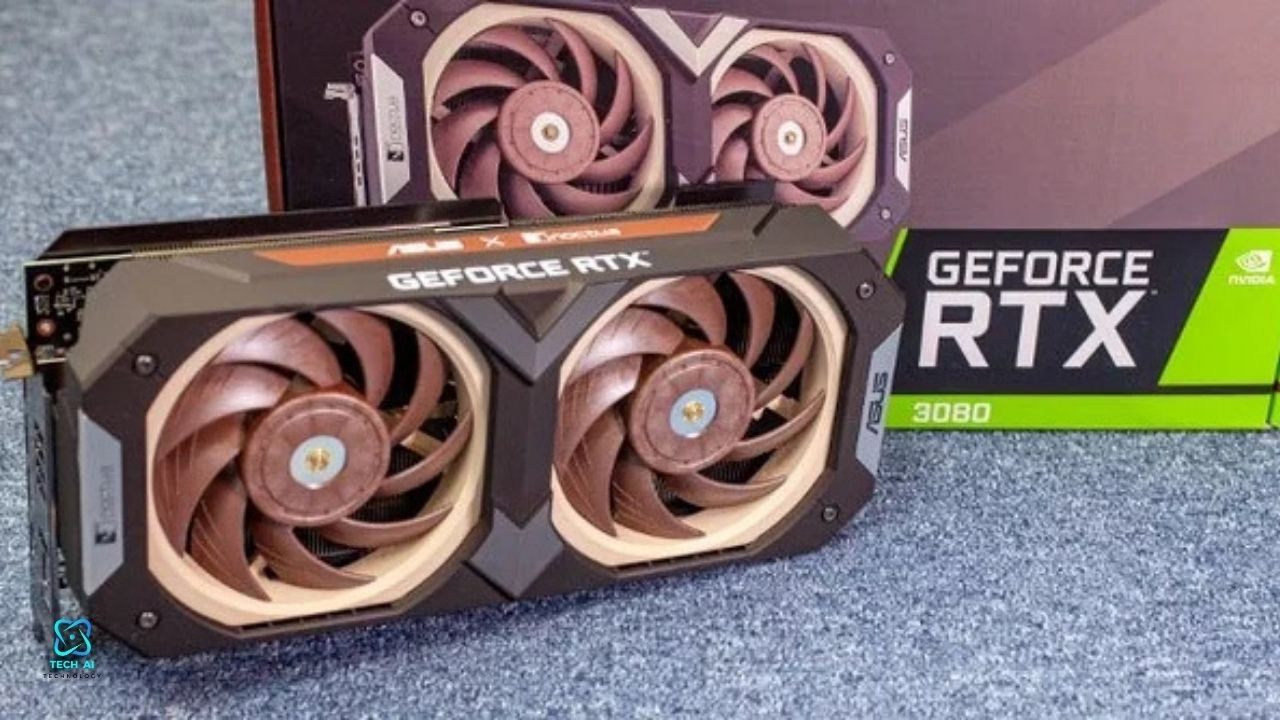
Understanding power consumption and cooling is crucial for high performance GPUs. Power efficiency is not just about lower electricity bills; it’s about optimizing performance while minimizing heat. Let’s examine how NVIDIA and AMD handle power and cooling.
Power Efficiency: TDP and Power Draw Comparisons
The Thermal Design Power (TDP) determines a GPU’s power draw. For NVIDIA and AMD, TDP is a key indicator of how much heat the GPU generates under load, influencing the required cooling solution. A higher TDP means more power is consumed, directly affecting energy efficiency and thermal performance.
GPUs’ power consumption varies significantly in gaming and idle states. Under load, GPUs demand more power to handle complex graphical tasks. NVIDIA and AMD GPUs are designed to scale their power draw depending on the workload. However, power efficiency remains critical to minimize energy consumption even in idle states.
Cooling Solutions: NVIDIA vs. AMD
Both NVIDIA and AMD partner cards offer unique cooling solutions. NVIDIA often uses custom cooling designs, like the Founders Edition, featuring dual or triple fan systems, advanced vapor chambers, and direct airflow management. This allows for better thermal performance and quieter operation under load.
On the other hand, AMD partner cards have various cooling systems, often built with third party cooling solutions. While AMD’s cooling solutions are efficient, they rely heavily on custom designed fans and advanced heat dissipation technology. AMD GPUs are known for their thermal performance under load, but cooling systems can differ depending on the card’s design.
Thermal Performance Under Load
Thermal performance is another key factor in power consumption. NVIDIA and AMD have tailored their cooling systems to provide optimum heat dissipation, ensuring the GPUs perform at their peak without overheating. Under heavy gaming workloads, both brands employ aggressive cooling strategies to maintain thermal stability, allowing users to experience smooth gameplay without thermal throttling.
Price and Value
Initial Cost
The initial cost plays a pivotal role when comparing GPUs. MSRP (Manufacturer’s Suggested Retail Price) reflects the starting price, but current market prices may vary due to availability and demand. Both high end and budget GPUs often fluctuate in price, driven by market trends and competition. It’s essential to consider these prices when making your purchase. Some GPUs might seem expensive upfront, but they can provide excellent value in terms of performance and features.
Price to Performance Ratio
The price to performance ratio is crucial in determining which GPU offers better value for money. A GPU with a higher performance level, such as faster frame rates, higher resolution support, and smoother gameplay, provides a better return on investment. While one GPU might have a hefty price tag, its superior performance could justify the cost. On the other hand, budget friendly GPUs can deliver solid performance for those with more modest requirements. Balancing price and performance ensures you get the most out of your investment.
Long Term Costs
Long term costs should also be factored in when purchasing a GPU. Energy efficiency plays a significant role here, as it can significantly impact your electricity bills over time. A power hungry GPU might offer incredible performance, but its energy consumption could offset those savings in the long run.
GPUs with better energy efficiency reduce operational costs, making them a more economical choice in the long term. When evaluating long term expenses, look for power efficient models that don’t compromise on performance, allowing you to save on electricity bills while enjoying top tier graphics.
Considering these factors: initial cost, price to performance ratio, and long term costs like energy efficiency you can make a well rounded decision that offers both performance and value.
Ecosystem and Features: NVIDIA vs. AMD
Regarding high performance computing and gaming, NVIDIA, and AMD have created ecosystems that elevate user experience through unique software and hardware integrations. Let’s explore their ecosystems and key features.
NVIDIA Ecosystem
NVIDIA has built a robust ecosystem designed to enhance gaming and creative workflows. GeForce Experience is the hub for managing game settings, optimizing performance, and updating drivers. It ensures smooth gameplay with automatic game optimization and one click driver installation. The NVIDIA Reflex technology reduces latency, giving gamers a competitive edge with real time response times. For content creators, NVIDIA Broadcast uses AI to improve live streaming by enhancing video and audio quality. Studio Drivers are tailored specifically for creators, ensuring stability and performance in creative applications like Adobe Premiere Pro and Blender.
AMD Ecosystem
AMD offers a versatile ecosystem designed for both gamers and professionals. Smart Access Memory is a standout feature, enabling faster communication between the CPU and GPU for enhanced performance. The Radeon Software suite provides an intuitive interface for managing gaming preferences, overclocking, and system monitoring. With constant cross platform optimizations, AMD ensures smooth performance across different hardware configurations, enhancing gaming and productivity experiences. Their continuous software updates and system integration innovation keep AMD users at the forefront of cutting edge technology.
Both ecosystems offer unique advantages. NVIDIA focuses heavily on AI powered tools and low latency, while AMD focuses on seamless system integration and cost effective performance. Whether you’re a gamer or a creator, these ecosystems are designed to maximize your hardware’s potential.
Use Cases and Recommendations
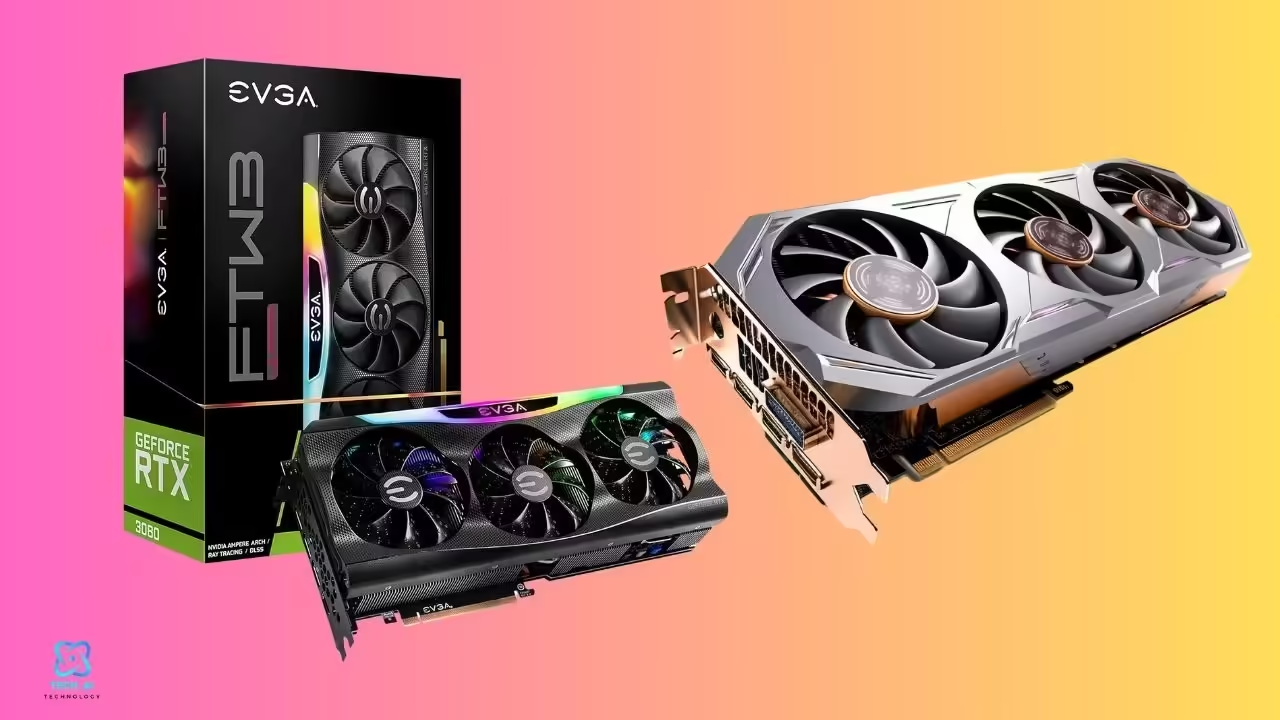
Best for Gamers
When selecting a GPU for gaming, resolution plays a critical role. For 1080p gaming, GPUs like the NVIDIA GTX 1660 Super or AMD Radeon RX 6600 XT deliver exceptional performance. They ensure smooth frame rates for competitive games. 1440p gaming demands more power, making the RTX 3060 Ti and RX 6700 XT excellent options. These cards balance visuals and high frame rates, perfect for immersive gameplay. 4K gaming requires top tier GPUs like the RTX 4090 or RX 7900 XTX for ultra settings and stable performance. For gamers seeking the best experience, pairing the GPU with a high refresh rate monitor is necessary.
Best for Creators
Content creators need GPUs that excel at multitasking. For video editing, cards like the RTX 4070 or RX 7800 XT offer fast rendering and compatibility with software like Adobe Premiere Pro. GPUs with high VRAM, such as the RTX 4080 or RTX A5000, benefit from 3D modeling, ensuring smooth workflows in Blender or Maya. Streamers should consider GPUs with NVENC encoders, like the RTX 30 series, for high quality live streaming without sacrificing in game performance. A GPU tailored for creators boosts productivity and minimizes downtime.
Best for Budget Buyers
Budget conscious buyers can still get excellent performance without overspending. The GTX 1650 and RX 6400 are fantastic for entry level gaming and light workloads. The RX 6600 and RTX 3050 stand out for mid range performance at an affordable price. These GPUs offer excellent value for money, balancing performance and cost. When building on a budget, check for sales or refurbished options to maximize savings. A solid budget GPU ensures you enjoy quality performance without breaking the bank.
Understanding your needs gaming, creating, or saving money can help you choose the perfect GPU for your setup.
FAQs:
Q1. Which is better for 4K gaming, the RTX 3080 or RX 6800 XT?
The RTX 3080 generally offers smoother performance in 4K gaming due to its faster memory bandwidth and DLSS support. However, the RX 6800 XT holds its ground with more VRAM, which can benefit some games.
Q2. Does the RX 6800 XT outperform the RTX 3080 in any area?
Yes, the RX 6800 XT outshines the RTX 3080 in VRAM capacity, offering 16GB instead of 10 GB. This makes it a better choice for future roofing and specific high demand scenarios.
Q3. How do their ray tracing capabilities compare?
The RTX 3080 performs superior ray tracing due to NVIDIA’s second generation RT cores and DLSS technology. The RX 6800 XT supports ray tracing but lags in performance and efficiency.
Q4. Which GPU offers better price to performance value?
The RX 6800 XT typically offers a better price to performance ratio, especially for gamers who don’t prioritize ray tracing. However, the RTX 3080 excels in high end gaming and creative workloads, justifying its higher cost for some users.
Q5. How does DLSS on the RTX 3080 compare to FSR on the RX 6800 XT?
DLSS on the RTX 3080 uses AI to upscale lower resolution images, improving performance and visuals. FSR, used by the RX 6800 XT, offers similar upscaling benefits but is less refined in quality and implementation than DLSS.
Q6. Is the RX 6800 XT a good choice for creative workloads?
The RX 6800 XT performs well in creative workloads, especially where VRAM is critical. However, the RTX 3080, with its CUDA cores and Studio drivers, is better optimized for rendering, video editing, and AI based tasks.
Q7. What is the power consumption difference between the two GPUs?
The RTX 3080 has a TDP of 320W, while the RX 6800 XT has a slightly lower TDP of 300W. Both require robust cooling solutions and power supplies of at least 750W.
Q8. Which GPU is more future proof?
The RX 6800 XT’s 16GB of VRAM gives it an edge in future proofing for demanding games. However, the RTX 3080’s advanced ray tracing and DLSS support make it a better choice for evolving technologies.
Q9. Are these GPUs good for VR gaming?
Both GPUs perform excellently in VR gaming, but the RTX 3080 is more compatible with VR titles optimized for NVIDIA hardware, thanks to technologies like VRSS (Variable Rate Supersampling).
Q10. Which GPU is better for streaming?
The RTX 3080 is better suited for streaming due to NVIDIA’s NVENC encoder, which delivers superior streaming quality and performance compared to AMD’s solutions on the RX 6800 XT.
Conclusion:
Both GPUs deliver exceptional gaming and creative performance when comparing the RTX 3080 and RX 6800 XT. The RTX 3080 shines with advanced ray tracing, DLSS, and superior streaming capabilities, making it ideal for gamers and creators seeking cutting edge features. On the other hand, the RX 6800 XT offers more VRAM, a better price to performance ratio, and excellent 4K gaming capabilities, appealing to value conscious buyers.
Your choice depends on your priorities whether it’s immersive visuals with NVIDIA’s ecosystem or AMD’s robust performance and affordability. Both are top tier options that redefine high performance computing.

